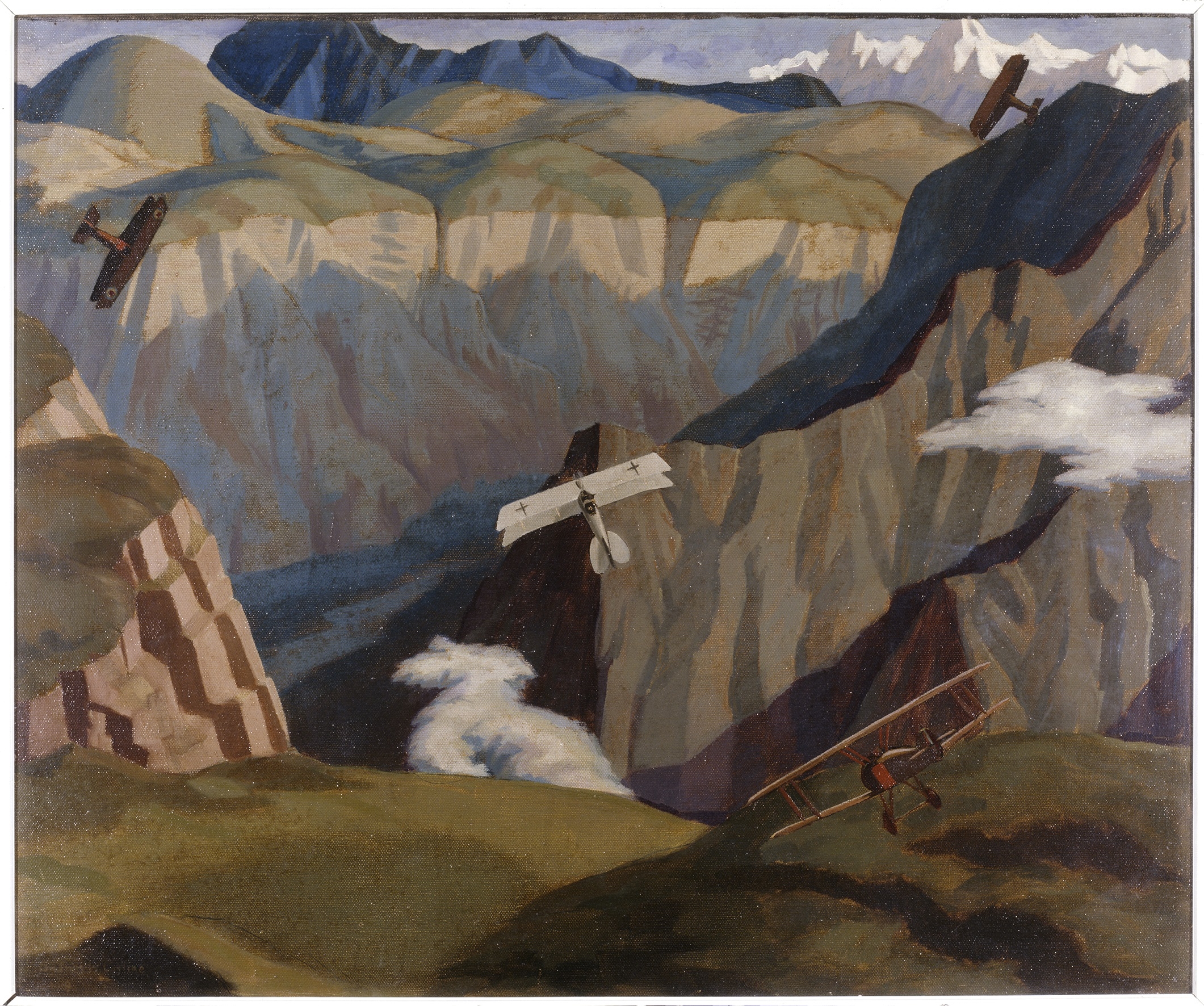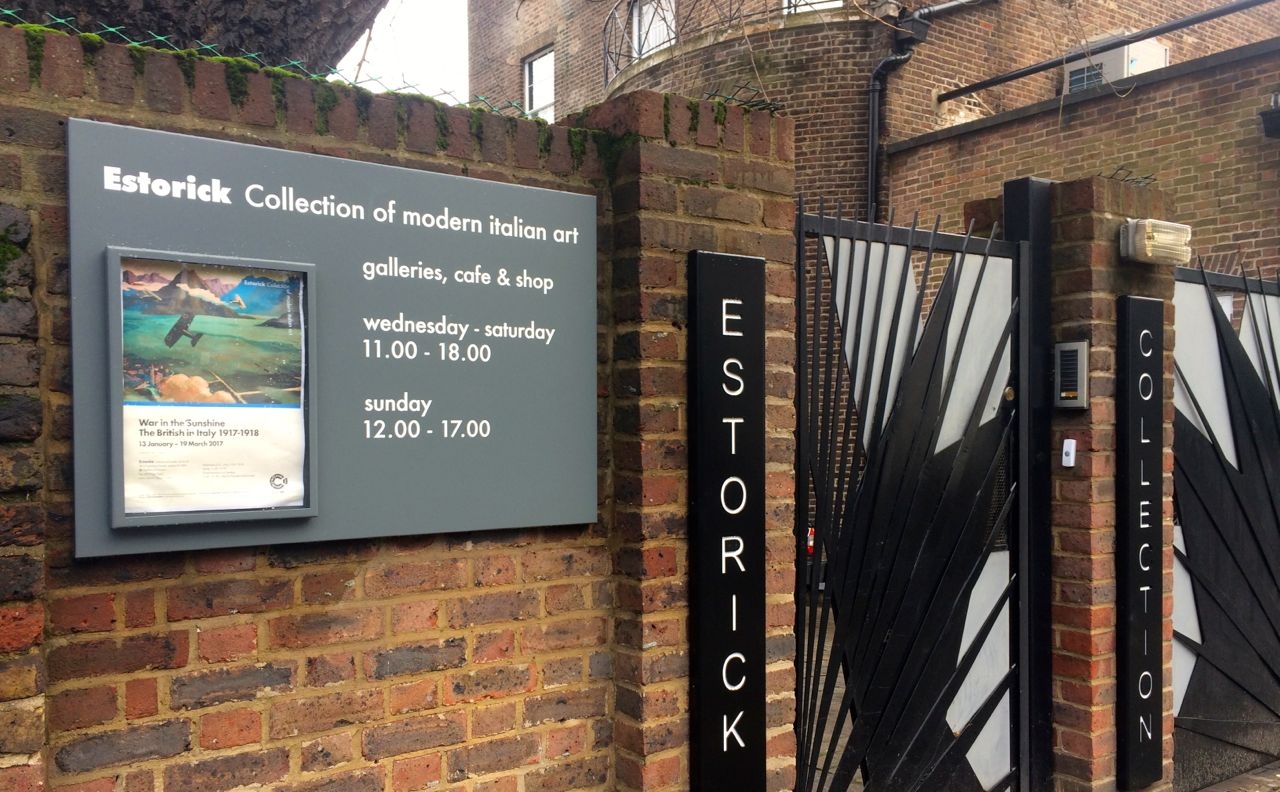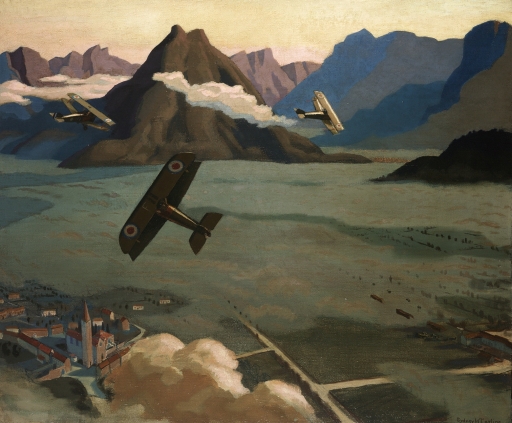CN Editor Peter Alhadeff views a new exhibition of paintings and photographs highlighting the Italian front.
Tucked away in a North London art gallery is a new exhibition offering a rare glimpse, certainly for British eyes, of the Allied campaign in Italy during the last year of the First World War.
‘War in the Sunshine’ at the Estorick Collection in Islington features 75 works by the artist Sydney Carline, and photographers Ernest Brooks and William Brunell, specially loaned from the Imperial War Museum.
Brooks, we learn, ‘chafed’ at being in Italy and his work on the Western Front is likely to be more familiar to many students of the Great War.
But for Sydney Carline, official war artist and pilot, the Italian front provided an unrivalled opportunity to show British planes in action against the spectacular backdrop of the Alps.
In particular, he was instructed to record the deeds of Britain’s newly-formed Royal Air Force, using an aircraft set aside for his purposes.
Carline’s scenes of Sopwith Camels wheeling in the skies above Europe’s highest mountain range are among the most evocative works in a room entirely devoted to his paintings and drawings.

The destruction of an Austrian machine in the gorge of the Valley of the Brenta © Imperial War Museums (Art.IWM ART 2678)
Carline would typically make simple sketches in charcoal or pencil while airborne, then work them up in watercolour or pastel soon after landing.
He did not gloss over the bloody business of war in his pictures of Austro-Hungarian troops being strafed on the ground, or British planes dodging distinctive black puffs of anti-aircaft fire over the Piave.
Displayed separately is a collection of photographs by the prolific Ernest Brooks, best known for his pictures of the battlefields of France and Flanders, and apparently a reluctant arrival on the Italian front.
According to the exhibition notes, the ex-soldier came to Italy in November 1917 ‘with a low opinion of its people and especially of its military. His perceptions became even more negative as time passed’.
Even so, Brooks does join William Brunell in composing some charming studies of Italian civilians, albeit he’s back on more familiar territory with a trio of the Allied military commanders, Sir Frederick Lambert, Armando Diaz and Jean Graziani.
Caporetto
Britain and France dispatched an expeditionary force to Italy in October 1917, fearing their ally would collapse after being crushed by the Central Powers at the Battle of Caporetto.
In reality, the ‘War in the Sunshine’ was as fierce and unpleasant as any other (for Italians, the alpine fighting of 1915-18 is remembered as ‘La Guerra Blanca’ – the White War), and this exhibition casts some of Italy’s best-loved historic cities and landscapes in a very different light.
As you leave Sydney Carline’s paintings, there’s a scene of moonlit Padua, almost as appealing on first sight as a holiday postcard. But the anonymous blackened figures and searchlight beams reveal a more sinister story. For this shows the people of Italy’s second oldest university city fleeing an Austro-Hungarian air raid in 1918.
At least 989 civilians were killed in night attacks on Italian cities in 1916-18.
When peace returned, Sydney Carline struggled as an artist to find those ‘scenes that blaze in the mind’s eye’, as he put it. He was also troubled by his actions during the war. In February 1929, he died from pneumonia, aged only 40.
 ‘War in the Sunshine: The British in Italy 1917-18’ is at the Estorick Collection, 39a Canonbury Square, London N1 2AN until 19 March 2017.
‘War in the Sunshine: The British in Italy 1917-18’ is at the Estorick Collection, 39a Canonbury Square, London N1 2AN until 19 March 2017.
Images: Sydney Carline – © Imperial War Museums (Art.IWM ART 2679/2678); Estorick Collection – Centenary News
